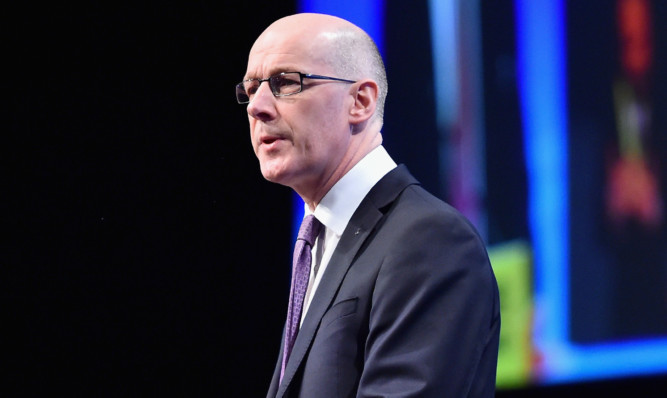Scotland’s Deputy First Minister has warned the Chancellor against continuing to pursue “unnecessarily stringent fiscal targets” ahead of the Budget on Wednesday.
John Swinney urged George Osborne to instead use limited borrowing to stimulate economic growth, after the Chancellor paved the way for fresh spending cuts, stating that savings equivalent to 50p in every £100 the Government spends need to be found by 2020.
Mr Swinney also highlighted the findings of fiscal watchdog the Office for Budget Responsibility (OBR) and academics, claiming Mr Osborne’s spending decisions have reduced GDP.
In a letter to Mr Osborne, he said: “Given the uncertain global environment, and in view of the additional pressures that this is placing on households, producers and exporters, this is not the right time to undertake more austerity.
“Additional austerity, by slowing growth further, will only reduce tax revenues worsening the fiscal position.”
He added: “By continuing to pursue unnecessarily stringent fiscal targets, the danger is that worthwhile investments, which would stimulate growth, are being overlooked.
“Given the continued low cost of public sector borrowing, this is an ideal time for limited borrowing to support capital investment which will boost the country’s long-term productive capacity and in turn its ability to create jobs and future tax revenues.”
Mr Swinney continued: “Last autumn, the OBR published estimates showing how your consolidation programme has reduced GDP. This has also been highlighted by academics,” he said.
“For example, Simon Wren-Lewis, Professor of Economic Policy at the University of Oxford, estimated in February 2015 that ‘in total, resources worth around 5% of GDP will have been lost forever by delaying the recovery’.
“That is equivalent to around £100 billion.”
The Deputy First Minister also used the letter to repeat calls for greater help for the North Sea oil and gas sector, including action to tackle barriers to exploration, an easing of the tax burden on the industry, improved access to decommissioning tax relief and urgent consideration of non-fiscal support, such as government loan guarantees.
He said: “Industry analysis has since confirmed the serious challenges the sector faces, and the stark drop-off in investment over the previous year.
“The Scottish Government is continuing to do all that we can to support the sector, and the sector itself is working hard to adapt to lower oil prices.
“However, the UK Government retains the key economic levers affecting the oil and gas industry and I repeat my calls for immediate action at your March Budget to ensure it is in a position to compete and the significant potential of the North Sea is realised.”
